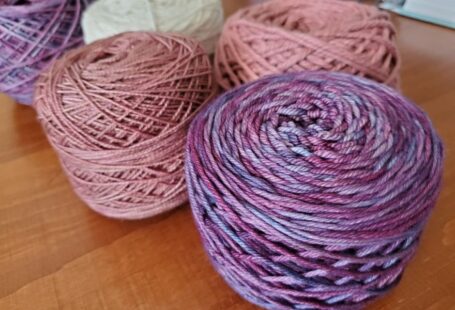When it comes to choosing yarn for your knitting or crochet projects, the options seem endless. However, if you’re looking for a natural fiber that is durable, warm, and versatile, wool and alpaca yarn are two popular choices. Both come from different animals and have distinct qualities that make them unique. In this article, we will compare wool and alpaca yarn, highlighting their differences and helping you make an informed decision for your next crafting endeavor.
Wool: A Classic Fiber with Timeless Appeal
Wool is one of the oldest and most widely used fibers in the world. It comes from the fleece of sheep and has been cherished for centuries for its warmth, resilience, and ability to take dye. Wool yarn is known for its elasticity, making it easy to work with and perfect for garments that require structure.
1. Natural Insulation: The warmth provided by wool is unparalleled. Its natural crimp creates air pockets that trap heat, keeping you cozy in colder temperatures. This insulation property makes wool a great choice for winter accessories like hats, scarves, and mittens.
2. Moisture-Wicking: Wool has the remarkable ability to absorb moisture without feeling wet. It can absorb up to 30% of its weight in water before feeling damp, making it an excellent choice for outdoor activities or garments that need to regulate body temperature.
3. Durability: Thanks to its natural resilience, wool yarn is highly durable and can withstand wear and tear over time. It is an ideal choice for projects that require long-lasting quality, such as sweaters, blankets, or socks.
Alpaca: Luxurious Softness and Natural Elegance
Alpaca yarn, on the other hand, comes from the fleece of alpacas, a camelid species native to the Andes Mountains in South America. Alpaca yarn is gaining popularity due to its silky smooth texture and luxurious softness.
1. Softness: Alpaca fiber is incredibly soft and often compared to cashmere or angora. It is gentle against the skin and perfect for those with sensitive skin or allergies. Alpaca yarn is a popular choice for baby garments or accessories where comfort is a priority.
2. Hypoallergenic: Unlike wool, alpaca fiber does not contain lanolin, a common irritant for some people. This makes alpaca yarn hypoallergenic and suitable for those with wool allergies.
3. Thermal Regulation: Alpaca fiber has excellent thermal properties, keeping you warm in cold weather and cool in warmer temperatures. It is an excellent choice for all-season garments, ensuring comfort throughout the year.
Which One Should You Choose?
Both wool and alpaca yarn have their unique qualities and applications. The decision ultimately depends on your specific project requirements and personal preferences.
If you’re looking for durability and structure, wool yarn is an excellent choice. Its elasticity and natural insulation properties make it ideal for garments that need to retain their shape over time. Wool is also widely available in various weights and colors, making it versatile for different projects.
On the other hand, if you prioritize softness and luxury, alpaca yarn is the way to go. Its silky texture and hypoallergenic properties make it perfect for sensitive skin. Alpaca yarn works well for projects like shawls, scarves, and baby garments that require a gentle touch.
In conclusion, both wool and alpaca yarn offer unique qualities that make them desirable for different types of projects. Whether you choose wool for its durability and warmth or alpaca for its softness and elegance, you can’t go wrong with either option. Consider the specific requirements of your project and enjoy the process of working with these beautiful natural animal fibers. Happy crafting!





